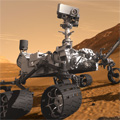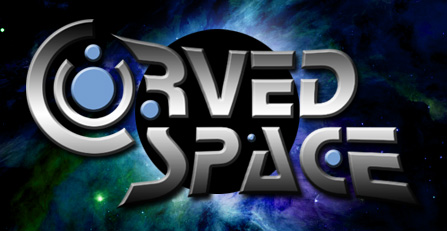Intensive work has been under way at NASA's Goddard Space Flight Center to develop telerobotic servicing skills for the Hubble Space Telescope in the event that a space shuttle crew is never again sent to the orbiting facility. Aerospace firms in the United States and in Canada have teamed with NASA to develop a Hubble Robotic Vehicle Deorbit Module.
Either a robotic or shuttle-based servicing option reportedly would cost in excess of $1 billion. That price tag is viewed by the White House, according to sources, as not affordable given other high-priority and more expensive efforts, such as the space shuttle fleet's return to flight and NASA’s "moon, Mars and beyond" agenda.
Sources said the White House plans to scuttle Hubble is part of NASA’s 2006 budget request, with some money in the budget allocated to using a propulsion module coupled to Hubble for its safe but destructive deorbiting.
The cutting of the Hubble servicing mission from NASA’s 2006 budget request was first reported by Space News on its Web site Friday and on Space.com.
Leading the fight
Sen. Barbara Mikulski, D-Md., a fervent Hubble supporter whose state is home to both the Goddard Space Flight Center and the Space Telescope Science Institute, issued a statement late Friday in which she vowed to continue advocating an Hubble servicing mission.
(Rest can be read at http://msnbc.msn.com/id/6862256/)
Eds: AMs.
By MARCIA DUNN
AP Aerospace Writer
CAPE CANAVERAL, Fla. (AP) -- With the moon on its horizon, NASA sees a slight increase in the budget proposed by President Bush on Monday, but it's not enough to save the Hubble Space Telescope.
Only $93 million in the space agency's $16.45 billion budget would go toward Hubble's survival: $75 million to develop a kamikaze robot that would steer the orbiting observatory into the ocean at the end of its lifetime, and $18 million to try to eke out as much scientific observing time as possible from the telescope through clever remote controlling.
No money is in the budget to send either a robotic repairman or shuttle astronauts to Hubble to extend its lifetime, a decision that is sure to anger astronomers and members of Congress. Late last year, a National Academy of Sciences panel recommended one final visit to Hubble by astronauts.
The proposed budget for NASA -- 2.4 percent higher than last year's -- sets aside $9.6 billion for science, aeronautics and exploration, and $6.7 billion for exploration capabilities. That includes $4.5 billion for the space shuttle program, on track for resuming flights this year for the first time since the 2003 Columbia disaster, and $1.85 billion for the international space station.
Just over a year ago, Bush announced a new exploration vision for NASA geared around returning astronauts to the moon by 2020. Everything now revolves around that.
NASA Administrator Sean O'Keefe said even though the space agency is not getting as much money as envisioned by the president a year ago, a 2.4 percent budget increase is "rather remarkable" given the federal deficit and the spending cuts elsewhere in the government.
As for Hubble, O'Keefe said the National Academy of Sciences panel presented such a bleak assessment of a robotic mission to install new parts on the space telescope that it made little sense to presume success and, consequently, no money was put aside for such an endeavor.
"We'll see. In a month's time, there may be an epiphany," O'Keefe said. "But I think it's going to be a very difficult mountain, a steep hill, to climb."
O'Keefe reiterated his long-held view that a shuttle flight to Hubble poses too many dangers in the wake of the Columbia catastrophe.
"It is a judgment call and this is a judgment call that is my responsibility for however period of time that I reside here," said O'Keefe, who will leave NASA in less than two weeks to assume the chancellor's job at Louisiana State University.
(http://www.washingto...3-2005Feb8.html)
******************************************
As everyone knows, the Hubble Space Telescope is our greatest orbital observatory at this time; no other like it will be launched within a decent timeframe, the earliest possibility being around 2011 to my knowledge. The Hubble Space Telescope has taken many great photographs of the deepest reaches of space, recently opening a window to the edge of the known universe (at least as far as light could have traveled according to the "Big Bang" timeframe). Some of the following are among Hubble's thousands of images:




^ A lensing cluster; this shows the effects of the fourth dimension/gravity on light ^





******************************************
Do you agree with the White House's plans to crash the spacecraft and close this cosmic window for these reasons? It has been up there for years, being improved and upgraded many times to expand our horizons on an extremely large scale. If it can be serviced then the telescope will continue to lead the field of astronomy for years to come.
This is what I think in my honest opinion:
If they want to increase funds for human missions to the Moon and Mars, then please don't take the funding from Hubble to do it.
If it craters then our universe will shrink enormously for most likely almost a decade, if not more as a result of the budget changes. If they want to bring the shuttles back into operation as is part of their plan, then do it and service the telescope.
I am sure that other ways can exist to bring Mars closer, but why must the end of Hubble be one of them?
(I edited the angry parts out, lol...)
 Sign In
Sign In Register
Register Help
Help







 MultiQuote
MultiQuote










